Frayed Knights: Building Dungeons
Posted by Rampant Coyote on November 24, 2015
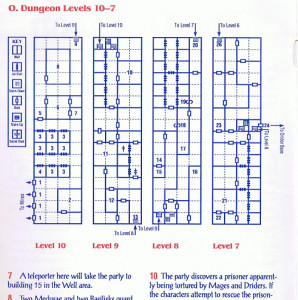 I’m in the middle of building dungeons for Frayed Knights 2: The Khan of Wrath. I stress over this. A lot. Way more than I should. You’d think that after decades of being a dice & paper game master making adventures, playing lots of CRPGs, decades of game design and development, and a full-fledged award-winning RPG under my belt that it’d be a snap. That’s what I keep thinking it should be. But it’s not, and it’s a mental thing. Or a pride thing. A lack-of-confidence thing?
I’m in the middle of building dungeons for Frayed Knights 2: The Khan of Wrath. I stress over this. A lot. Way more than I should. You’d think that after decades of being a dice & paper game master making adventures, playing lots of CRPGs, decades of game design and development, and a full-fledged award-winning RPG under my belt that it’d be a snap. That’s what I keep thinking it should be. But it’s not, and it’s a mental thing. Or a pride thing. A lack-of-confidence thing?
Running my friends through a published adventure module the other night, I looked at the map and thought, “You know, what I make is much better than this. This is fun, and this is the kind of experience I’m going for, right? What’s the problem? Why should I stress out about it?”
Well, yeah. Compared to maps which are only a tool for the game master, or to the old gridded maps of the games that were my inspirations for the game (like the one from Secret of the Silver Blades, above), sure. But actually being able to see these areas and play them in a game that wasn’t made before Bill Clinton was in office means I have to do something more with them, even on an indie budget. I’m still competing with stuff like this, and better:
(The Elder Scrolls V: Skyrim)
Yeah, on my budget, that ain’t happening. Even some of the semi-recent lower-budget stuff that’s limited to an axis-aligned grid looks pretty amazing:
(Might & Magic X: Legacy)
(Legend of Grimrock 2)
Yeah. Not gonna get there, as much as I would like to. Visually, we can make the dungeons look nice, but we have to compete on other fronts. We can do some very interesting things with them, which I’m very excited about. Navigating each dungeon in Frayed Knights 2 is like a story unto itself, with lots of interactions and different types of encounters.
But… it’s intimidating. I find myself under a lot of self-inflicted pressure. I shouldn’t. I should just have fun with it. I keep telling myself that.
Fortunately, I do. When I’m cutting loose and no longer worrying about how I’m stacking up with everybody else out there, I really am having fun. Working out the storylines, the flow, and trying to make each dungeon be a stand-alone, self-contained adventure in it’s own right isn’t easy. I want them to be a unique experience not found in other CRPGs. I can’t just throw some rooms in there and stock them with random encounters. I find myself agonizing over seemingly minor details.
But I’m having fun. This is the part I look forward to, the part I imagine when I think about “making RPGs.” Building the world… the playgrounds. It is fun. Having fun means I’m being more productive, and I think players will have more fun too.
So… onward. More dungeons. More interactivity. More puzzles. More interesting combats. More traps. More amusing dialog. More secrets. More story. More fun. That’s the goal.
Filed Under: Frayed Knights - Comments: 9 Comments to Read
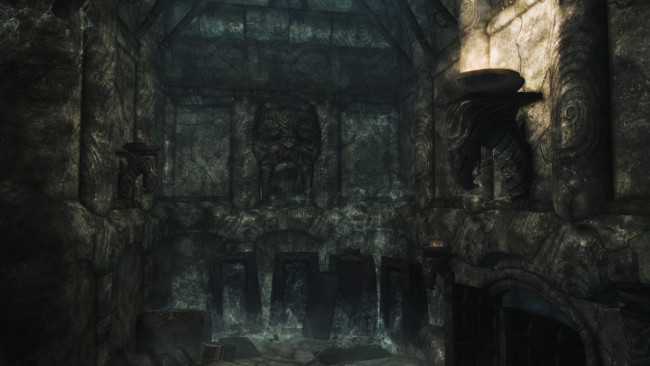
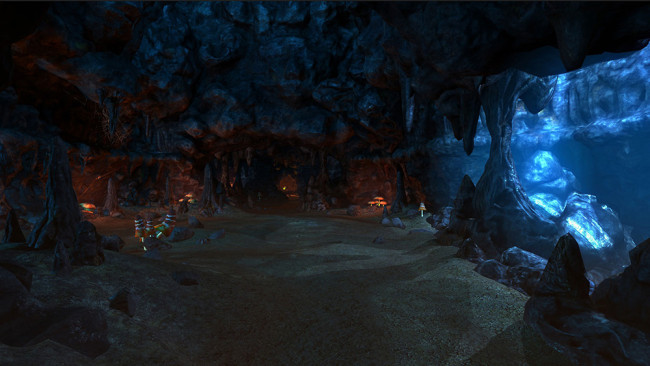
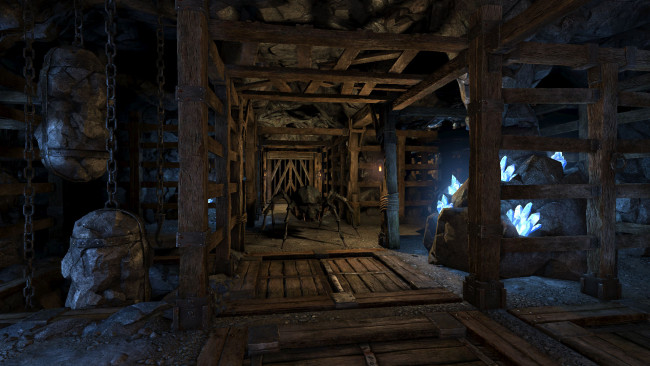
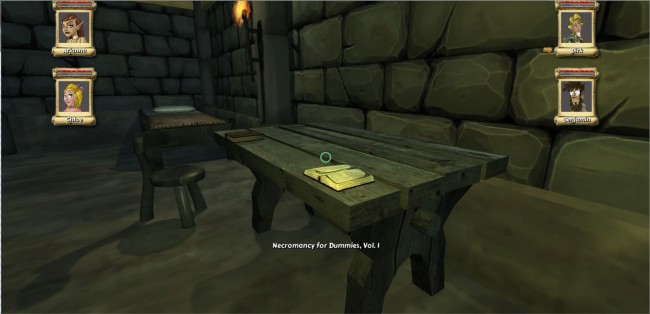
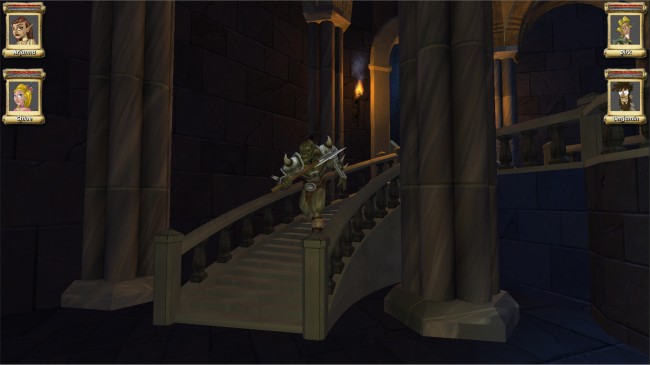
Noumenon72 said,
These screenshots are all too dark for me to see, but my computers have been known to have trouble with that kind of thing.
Rampant Coyote said,
Bummer. Though at least it’s not JUST my game…
(Funny… I’ve lightened up the swamp dungeon a lot, to the point that it’s only “a little too dark” for many people, but Kevin now complains that it’s way too bright.)
Fox said,
What makes dungeons fun for me is discovering the stories that have taken place in there. If this is the ultimate dark dungeon of doom, what sorts of things have transpired there? If the player finds a dead body in there, what is its significance? Is it an adventurer who met his end after being chased by the deadly denizens of the dungeon, only to die of starvation as he ultimately evaded them but then got himself lost? Or is it just a random body because the level designer thinks it would be cool or scary? The fallout games do this pretty well in a lot of locations, especially with the vaults themselves. Each vault has some story about what its inhabitants were subjected to, and you find out gradually through logs, items, or carefully placed items/corpses.
Rampant Coyote said,
EXACTLY, Fox! That’s what thrills me, too. In fact, in designing the dungeon, I try to have three stories at once:
#1 – The back-story for the place… why was it built, how was it used originally (if applicable)
#2 – The current story… the events taking place there before the characters arrive. What’s happening
#3 – The player’s story… why they are there, and what is unfolding as they go through it.
These aren’t necessarily super-deep or detailed, but that provides interesting layers. Naturally, #3 is the most important… that’s what the location means to the player, which is the Big Deal. But so long as that is answered and is valuable, then the rest becomes intriguing and in some ways helps pull the player into the game world.
Maklak said,
Skyrim is so gray and blurry, that I’m not entirely sure what I’m looking at. Why would there be a face carved up there, but no carvings below it? I also dislike circular dungeons, they are an aberration.
Might and Magic looks better, if not entirely like a natural cave. Plus it has all kinds of conveniently placed lights, but that’s rather standard with RPGs. Notable exceptions are Eschalon and Exanima (but they added lights and only some parts force you to use a torch and those parts are scary).
Grimrock looks good and the lore says it is an artificial dungeon made as a test, so no complains here.
FK looks clean and I actually like that. No blurr, no “everythings must be a shade of brown”, clean. It is bright and has those everburning torches, but they’re acceptable. Maybe there should be a dialogue about torches and who replaces them and how often. Or you could make things dark, but have a light spell.
A few good points about torches, lanterns and other sources of light.
https://www.youtube.com/watch?v=jiuHr5YVJBI
https://www.youtube.com/watch?v=LMhMrnWslQs
https://www.youtube.com/watch?v=HQZqbGME5HY
Rampant Coyote said,
Actually a little of both. In Frayed Knights 1 there’s a whole dialog explaining about the torches.
Maklak said,
Any comments on why so few level designers ever seem to look at real-life floor plans of castles, other buildings and caves? Skyrin-style theme park dungeon mostly works in 3D, but it looks ridiculous in 2D.
Rampant Coyote said,
Actually, I’d be happy to… although that really could be a blog post of its own.
We were (still are? It’s for FK3) using a floorplan for Bram Castle as a baseline for one level. It turns out that those floorplans were deliberately designed to be tight and confining in order to slow down potential attackers. That way a single defender could hold off an army, if they could only approach one at a time.
Perhaps in a VR environment with a setup that can track your fine body movements as you duck, twist, and lean to go through the environment, that would work out okay (although without tactile feedback, maybe not), but in the simplified 3D environment and controls of modern video games, it just doesn’t work. Ditto for caves. Those can be hard to navigate in real life, and even harder for the player – let alone AI – to believably walk through in a game.
The best we can do is borrow some elements from real life to give it some of that authentic flavor, and then go from there.
Well, that, and often a realistic map is not the same as a fun map. But that’s another story.
Maklak said,
Yeah, I guess. In 3d games corridors need to be big enough for the camera not co clip and in 2d isometric games you need doors to be easily clickable and stuff not obscured too much (Eschalon sometimes didn’t and had a few narrow corridors hard to see and fight in). Plus a cave goes up/down a lot and that doesn’t work in 2D.
I’ve seen a floor plan of a real castle and it was pretty awesome with buildings in the inner courtyard, storage spaces, machines (siege engines?), bedrooms and such. It would be pretty fun to explore in real life, but frustrating in an RPG, if the defenders were any good and used arrow slits, murder holes, choke points, surrounding, etc.
I also figured, another factor is compression. In reality buildings and locations are mostly empty space and/or much of the same (like an office building with 20+ floors). In a game that would be boring, so games compress the experience and make factories have one assembly line with a few machines, ten office and storage rooms and that’s about it. Or maybe an armoury with ten guns / swords instead of hundreds. Or food storage that wouldn’t last 50 people a day, much less several months.
My pet peeve is that once you break too far from real-world equivalents and make dungeons too gamey, it starts breaking immension, when it becomes clear that the layout makes no sense from practical standpoint, other than to slow the player down.